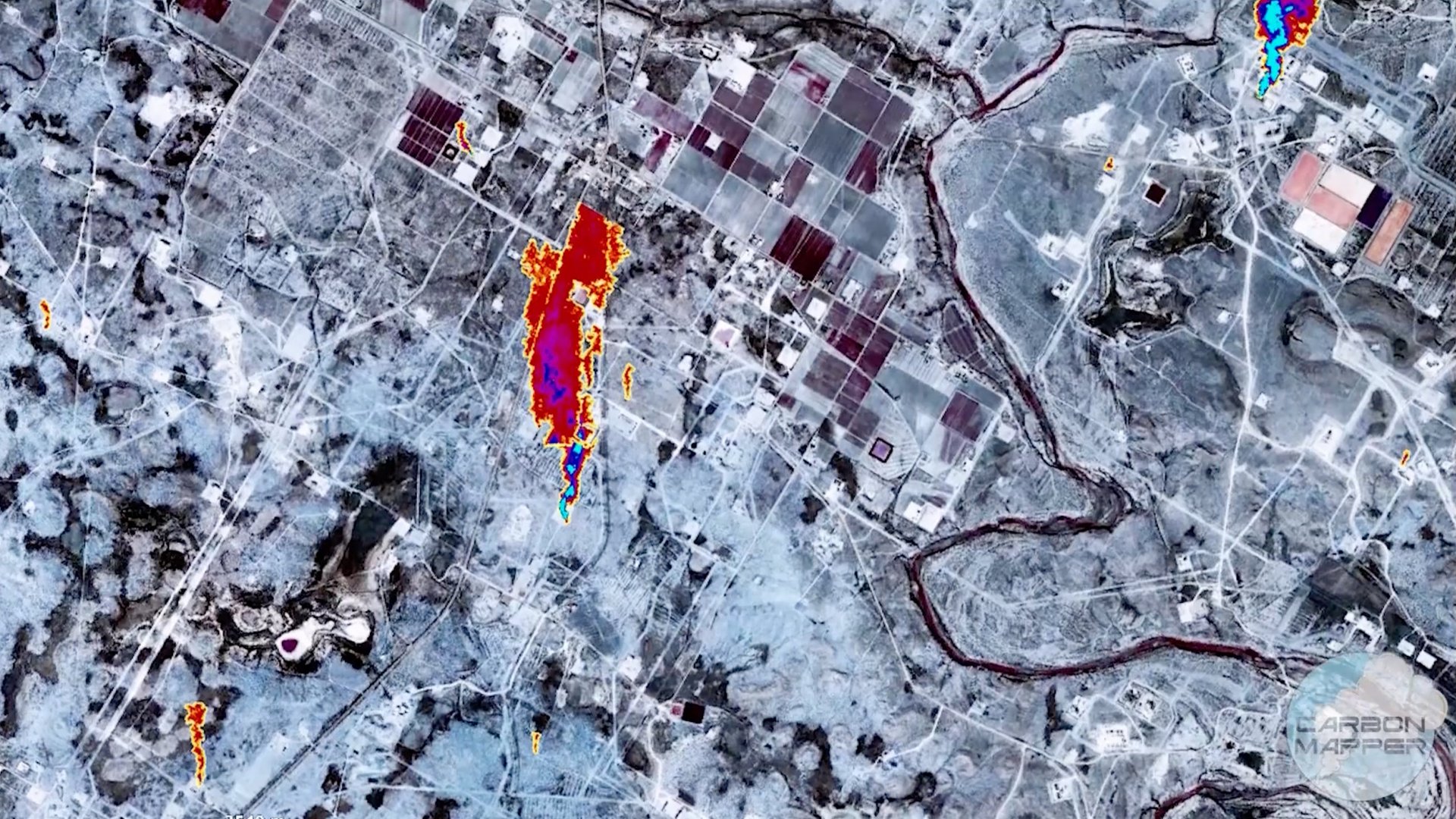The era of real-time emissions surveillance is upon us
“Methane emissions are analogous to a wildfire,” Riley Duren says. “Except these wildfires are invisible.”


“Methane emissions are analogous to a wildfire,” Riley Duren says. “Except these wildfires are invisible.”
Duren is the CEO of a nonprofit, Carbon Mapper, that is working with the company Planet to launch two new satellites that will track these emissions from orbit. These occur at gas wells, pipelines, refineries, and power plants, but also landfills and cattle fields. While they dissipate faster than carbon dioxide, they have a greater proportional impact on global warming.
Governments around the world have been working to put in place standards to reduce methane leaks and meet climate goals, but it is difficult to move what you can’t measure. That’s where Carbon Mapper comes in—it will crunch satellite data to produce usable insight for regulators, industries, and the public at large.
The project grew out of former California governor Jerry Brown’s plan to use a satellite to gather data for his state’s environmental regulators, which set up strict rules for methane in 2017. When Carbon Mapper’s project comes online in 2023, it is expected to make those rules much more effective.
“We have regulations in place already for oil and gas and landfills that require these sites are visited once a quarter to inspect for methane and mitigate anything they find,” says Jorn Herner, who leads emission mitigation at the California Air Resources Board. “This will enable almost daily observations, and the efficacy of those mitigation actions is going to improve drastically.”
You can get a sense of what it might look like from this video, created with data collected by the future satellite sensor on an aircraft flying over Texas’ Permian Basin.
Duren says the next two years before the satellite launches are an opportunity to prep stakeholders to use the new data as soon as it is available. He hopes to support everything from the European Union’s methane strategy to a plan from the environmental nonprofit RMI to develop a system to certify responsible oil and gas producers.
“Think of it as market mechanisms to drive change: establishing low methane intensity standards on natural gas and being able to provide independent certification that can contribute to that,” Duren says.
Existing satellites that can spot methane tend to be focused on the bigger picture than detecting leaks at individual facilities, and can’t easily revisit the same place frequently—a speciality for Planet’s small satellite constellations, which capture imagery of every square inch of the Earth’s landmass daily. “The big difference is scale and the ability to do routine, persistent high-frequency sampling,” Duren says.
The Carbon Mapper project demonstrates new models for government to work with private companies and achieve their goals in space. The effort is a unique public-private partnership between several non-profits, the state of California, the US national Jet Propulsion Laboratory, and two universities.
JPL’s contribution is an advanced hyperspectral sensor suited to spotting methane and carbon dioxide. These devices gather data across a far larger range of the electromagnetic spectrum than typical space sensors, allowing far more information to be derived about the chemical composition of what it sees. “These instruments were under development by NASA and their academic partners for literally three decades,” Duren, a former JPL researcher himself, says. “It really is the gold standard for high-resolution imaging spectroscopy.”
Robbie Schingler, Planet’s chief strategy officer, says working with JPL’s advanced sensor is a key reason for the partnership. After receiving the first hardware from the federal lab, Planet will work to build another with the same image quality but that can be manufactured more efficiently for future spacecraft.
Planet will build and operate the new Carbon Mapper constellation. The new satellites will be of similar size to the largest class of spacecraft it already operates, weighing about 150 kilograms (330 lbs). They will orbit about 400 kilometers (250 miles) above the planet and scan more than 93,000 square kilometers (58,000 square miles) each day.
While the program is initially funded by $100 million in donations from the High Tide Foundation and other backers, the second phase will rely on revenue sharing between Planet and Carbon Mapper. Planet will be able to use the hyperspectral data from these satellites to serve customers in sectors ranging from agriculture to mining.
The Carbon Mapper project aligns with Planet’s focus on sustainability, but it could also smooth the company’s continued push for ever more powerful sensors in orbit.
A version of this story originally appeared in Quartz’s Space Business newsletter.